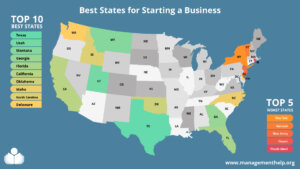Free Nonprofit Micro-eMBA Module #3: Role of Nonprofit Chief Executive Officer
© Copyright Carter McNamara, MBA, Ph.D., Authenticity Consulting, LLC.
This learning module is in the nonprofit organization development program. However, this module can also be used by anyone as a self-study exercise to learn more about the role of the nonprofit chief executive officer.) Much of the content of this module was adapted from the guidebook, Field Guide to Leadership and Supervision for Nonprofit Staff.
Sections of This Module Include the Following
- Introduction
- Outcomes
- Materials for Review
- Suggested Topics for Reflection and Discussion
- Activities to Build Systems and Practices
- Assessments
- Tracking Open Action Items
INTRODUCTION
In an incorporated nonprofit organization, the chief executive officer (often called the executive director) is the singular organizational position that is primarily responsible to carry out the strategic plans and policies as established by the board of directors. The chief executive officer reports to the board of directors. This learning module provides an overview of the position of executive director, including major roles, responsibilities, and functions.
The goal of this module is to provide a sufficient overview to gain a strong, initial perspective on the role of the executive director, particularly when helping to establish the board of directors. The executive director should have at least a basic understanding of all of the systems and practices conveyed across the various learning modules in this program. Therefore, this learning module does not go into great depth about each of the particular systems and practices managed by the executive director — rather, this module relies on the rest of this program to provide that depth of information.
NOTE ABOUT THE ORDER OF MODULES (AND SOME DUPLICATION WITH UPCOMING MODULE ON BUILDING BOARDS): The board of directors is legally charged to govern a nonprofit corporation. Therefore, it is often common to start training programs with an overview of the board of directors. However, in this program, this learning module about the role of the chief executive is presented before
the learning module about boards of directors.
The reason for this order of modules is as follows. Frequently nonprofits are started by someone with a strong vision for a new service to the community. That person often goes on to become the first executive director of the new nonprofit. Typically, that person also takes a very strong role (often the leading role) in the initial organization and development of the board of directors. Therefore, modules in this program are organized to help the founder (and often the first executive director) maintain a clear perspective about the roles of the executive director and the board of directors before going on to focus attention on building the board of directors.
NOTE ABOUT BOARD COMMITTEES: If you are starting a nonprofit and using this program to do so, then you will soon be building your board. When you do, consider establishing a Board Personnel Committee to review and help guide the implementation of the information in this learning module — that Committee could be very useful to help develop and support the CEO. Major activities and goals from this learning module could be incorporated into that Committee’s Committee Work Plan.
OUTCOMES
Learners who complete this module will achieve the following outcomes:
- Learn What a Chief Executive Officer Is
- Understand the Major Functions of the CEO
- Understand Core Knowledge and Skills for the CEO Role
- Be Prepared for Building Your Board
- Set Basis for Strong Board-Staff Relationships
- Avoid “Founder’s Syndrome”
MATERIALS FOR REVIEW
- The following materials will help you address each of
the topics and learning activities in this module.
Orientation to Chief Executive Role
- Chief Executive Role — particularly the sections:
Early, Basic Preparation for Building a Board
Mention is made to boards of directors at this point because chief executive officers of new organizations are often the people who organize and help develop the original board of directors. The board can be more fully developed in an upcoming module about boards of directors in this program.
- Overview of Board Roles and Responsibilities — particularly read each of the sections:
- Board Roles and Responsibilities (read all)
- Sample Job Descriptions (particularly read the role of the board chair and scan others)
- Guidelines for Recruiting New Board Members (review closely)
- Sample Board Application Form (review closely)
- Ideas to Generate Participation of Board Members (review closely)
Early, Basic Preparation for Working With a Board
- Board and Staff Responsibilities (review closely)
- Sustaining High-Quality Relationship Between Board Chair and Chief Executive (review closely)
- Guidelines for Evaluating the Chief Executive (scan the guidelines)
- Sample Form to Use During Evaluation of Chief Executive (scan the form)
Optional: “Founder’s Syndrome”
Too often, chief executives who also are the founders of the organization, get the organization into trouble when the chief executive struggles to run the organization according to the mission of the organization, rather than according to the personality of the founding chief executive. A review of the following guide can give the new chief executive a solid impression of “founder’s syndrome” and how to avoid it. It’s particularly wise for the chief executive to highlight sections of the guide to share with board members in a board meeting, thus the board members can help the chief executive to avoid founder’s syndrome behavior — because founder’s syndrome is really an organizational problem, not a personal problem of the founder.
Founder’s Syndrome — How Organizations Suffer — and Can Recover
SUGGESTED TOPICS FOR REFLECTION AND DISCUSSION
- Learners are strongly encouraged to discuss the following questions with peers, board members, management, and staff, as appropriate.
Orientation to Chief Executive Role
1. What is the “definition” of a chief executive officer? (See What is the “Chief Executive Officer”?)
2. In an incorporated nonprofit, to whom does the chief executive report? (See What is the “Chief Executive Officer”?)
3. What are the five major roles of a chief executive officer? (See General Responsibilities of the Chief Executive.)
4. What are the six major functions/responsibilities of a nonprofit chief executive officer? (See Typical Functions/Responsibilities of Corporate Chief Executive Officer.)
Early, Basic Preparation for Building a Board
- Note that the founder of a nonprofit organization often recruits the first board members, and supports members to grow into their roles as board members, as well. Therefore, the founder should initially have some very basic understanding of the roles of a board. This understanding will soon be enhanced later on during further development of the board and nonprofit organization.
1. Name the five duties and ten responsibilities of boards (as listed on the materials included in your materials for review)? (Note that various experts might offer a different mix of duties and responsibilities. The important point here is to get a basic sense of the overall responsibilities of a board.) (See Board Roles and Responsibilities.)
2. To whom is the board of directors responsible? (See Board Roles and Responsibilities.)
3. What are the responsibilities of the board chair? Vice-chair? Secretary? Treasurer? Board member? Be sure you understand the role of the board chair. The chief executive officer and the board chair work closely together to coordinate and support board activities. (See Sample Job Descriptions.)
4. Of the 10 guidelines for recruiting board members, how many can you remember? The chief executive officer often plays a key role in recruiting the first members of the board of a new nonprofit organization. (See Guidelines for Recruiting New Board Members.)
5. What information is requested by the board application (as listed in your materials for review)? (You might customize your own application form, of course.) (See Sample Board Application Form.)
Early, Basic Preparation for Working With a Board
1. Test your initial knowledge of the roles of the board and staff by completing the table at Board Roles and Responsibilities — Test Your Knowledge. Next, compare your answers to the answers depicted in the table Board and Staff Responsibilities.
2. Name at least five actions that chief executives and board chair can take to ensure an ongoing, strong working relationship. (See Board and Staff Responsibilities and Sustaining High-Quality Relationship Between Board Chair and Chief Executive.)
3. Name at least five actions the chief executive and board members can take to ensure ongoing, strong participation of board members. (See Ideas to Generate Participation of Board Members.)
4. Describe the general procedure for evaluating the chief executive. (See Guidelines for Evaluating the Chief Executive and Sample Form to Use During Evaluation of Chief Executive.)
Optional: “Founder’s Syndrome”
- “Founder’s Syndrome” can easily occur in a new nonprofit. Leaders of new nonprofits can avoid a great deal of pain and hardship by understanding the basics of this syndrome and how to avoid it. When addressing the following questions, refer to the document Founder’s Syndrome.
1. What is “Founder’s Syndrome”?
2. What causes it?
3. How can you recognize it?
4. Name at least three actions that boards can take to address it.
5. Name at least three actions that chief executives can take to address it.
ACTIVITIES TO BUILD SYSTEMS AND PRACTICES
- Learners are strongly encouraged to complete the following activities and share and discuss results with peers, board members, management, and staff, as appropriate.
- As you proceed through the following activities, be sure to note any incomplete actions in the Action Item Planning List.
Writing a CEO Job Description
1. Draft a job description for the position of chief executive officer of your organization. If applicable, present the draft to your board for review and authorization. (See Sample Job Description. Note that this job description should not merely be adopted as is, rather it should be modified according to the nature of and needs of your organization.)
Getting Ready to Recruit Your First Board Members
Basic Materials to Prepare
1. Draft a list of guidelines you can follow to be recruiting members for your board. (See Guidelines for Recruiting New Board Members.)
2. Draft a board application form that you can use to begin recruiting members for your board. (See Sample Board Application Form.)
3. One of the biggest turn-offs to potential board members is the appearance of a nonprofit that’s out of control, or that’s in crisis. The planning and systems you’ll glean from this online program will help your nonprofit be attractive to potential board members. For now, gather materials that will help potential board members understand your organization, for example, brochures, your mission statement, testimonials from clients, descriptions of community problems you’d like to address with your nonprofit, etc. Give them job descriptions of board members. (You’ll soon develop more useful board materials in an upcoming module in this program.)
Identify Potential Board Members — Focus on Skills in Finances, Programs, and Fundraising
4. Make a list of what skills are needed by your nonprofit. Think about what skills — not just what people – are needed on your board. If you’re just getting started with your new organization, then you can use almost any help you can get — but there are certain skills that are usually very useful early on, for example, financial help, fundraising help, help design programs, etc. Your needs will become more clear to you when you start and finish strategic planning in an upcoming module in this program. (Reference the Sample Board Recruitment Grid.)
5. Should you be a member of your board? Why or why not? What are the advantages and disadvantages? (See Should CEO Be On the Board? (scroll down).)
6. Write a list of at least five people whom you will approach to join your board. (See Sample Job Descriptions and Sample Board Application Form.)
Managing Your Early Board and Staff Relations
1. What problems might you foresee in working with a board? It can be a major challenge for strong, visionary founders to help organize and develop a group of people to whom he or she reports. Write a list of the advantages and disadvantages to you. How can you overcome the problems that you might foresee? Present your concerns in an upcoming board meeting and ask for open discussion around your concerns. Or, approach another appropriate source of help — but do address your concerns. They’re likely to only get worse if left unaddressed. (See Board and Staff Responsibilities and Sustaining High-Quality Relationship Between Board Chair and Chief Executive.)
Building the Foundation for Board’s Evaluation of Chief Executive
1. Draft a set of performance goals for the role of chief executive officer for your organization. The board of directors should evaluate the performance of the chief executive officer on a regular basis. This evaluation should be done on a regular basis and should include a reference to the responsibilities listed in the job description and performance goals for the year. The performance goals should be closely aligned with goals established during strategic planning. Performance goals defined during this module should be updated as a result of the strategic planning conducted in the upcoming learning module about strategic planning. (See Guidelines for Evaluating the Chief Executive, Sample Form to Use During Evaluation of Chief Executive and Performance Management (basics concepts).)
2. Write a set of guidelines that will be followed by your nonprofit to evaluate the chief executive officer. Have the board members review the guidelines. (Later on in the learning module about boards, we will formally adopt a set of guidelines for evaluating the chief executive officer.) (See Guidelines for Evaluating the Chief Executive and Sample Form to Use During Evaluation of Chief Executive.)
Optional: Does Your Organization Have “Founder’s Syndrome”?
1. Share copies of the Founder’s Syndrome document with board members, if you already have them. Set aside 15 minutes in an upcoming meeting to share reactions and ideas about what you might do in the coming months in order to avoid the syndrome. Write down an action plan of what you will do, who will do it, and by when. In the action plan, including actions the chief executive officer and the board can take.
ASSESSMENTS
The next learning module will provide an overview of the basic management and leadership skills needed to start and manage a nonprofit organization. However, you might find it useful to begin thinking about your own skills at this time. If so, consider the following assessments.
Needs Assessments for Management Training and Development
TRACKING OPEN ACTION ITEMS
1. One of the first indicators that an organization or a person is struggling is that open action items are not tracked and reviewed. (Open action items are required actions that have not yet been completed.) Instead, people only see and react to the latest “fires” in their workplaces or their lives. Whether open action items are critical to addressing now or not, they should not entirely be forgotten.
Therefore, update and regularly review a list of open action items (identified while proceeding through this program) that includes listing each open action item, who is responsible to complete it, when it should be completed, and any associated comments. When updating the list, consider action items as identified during discussions, learning activities, and assessments in this module.
Share and regularly review this action item list with the appropriate peers, board, management, and employees in your organization. You can use the following Action Item Planning List. (At that Web address, a box might open, asking you which software application to open the document.)
2. If you have questions, consider posing them in the national, free, online discussion group hr.com, which is attended by many human resource and organization development experts.
(Learners in the nonprofit organization development program can return to the nonprofit organization development program.)
For the Category of Leadership:
To round out your knowledge of this Library topic, you may want to review some related topics, available from the link below. Each of the related topics includes free, online resources.
Also, scan the Recommended Books listed below. They have been selected for their relevance and highly practical nature.
 Sections of this topic
Sections of this topic
















